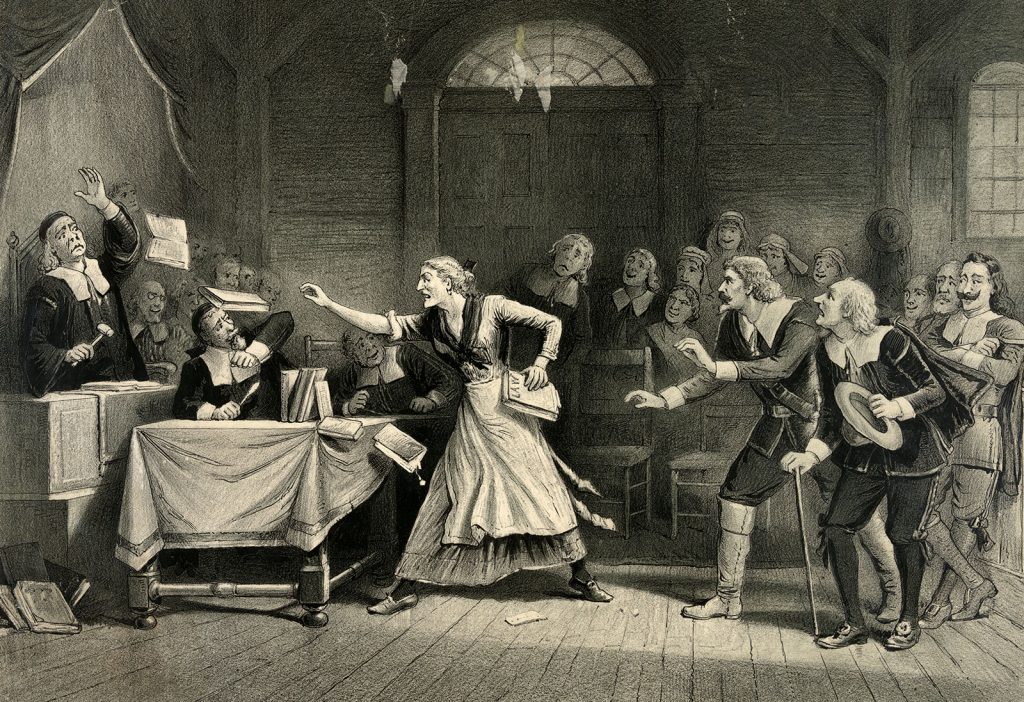Near the center of RMBG you will find several graves belonging to the Floyd family: Sarah, her sons John and Hugh, and her daughter in law Mary. Sarah Floyd’s is the smallest of this group but perhaps the most noticeable due to its strangely angled sides and toothy winged skull.

Researching the everyday women of colonial America is frustrating. When looking up a man, you can easily find basic details such as dates of birth and death but also how much property he owned , who he might have sold it to, his various roles in the community, etc. For women, the records of the time don’t provide much beyond who they married and how many children they had. So all I can really tell you about Sarah Doolittle Floyd is that she was born around 1642 to John Doolittle and his first wife, she died on June 16, 1717, and in between she had several children with her husband John, who had the bad luck to be among the accused during the Salem Witch Trials of 1692.
The Salem Witch Trials reached far beyond Salem. Accusations were made and innocent people had their lives upended all over the region before Governor William Phipps ordered a stop to the trials. While the hows and whys of the witch hysteria will always be subject to interpretation, we can look to one theory to explain how John Floyd became one of the accused.
Historians have made a link between the Salem Witch Trials and armed conflicts between settlers and Native Americans in Maine. Some of the accusers were children who lived in Maine at the time of these conflicts. They were witness to acts of violent atrocity, and some were orphaned by Native American attacks. Historians theorize that PTSD from these experiences contributed to the witch hysteria, causing these girls to accuse men they associated with this period in their lives. This led to the accusations against George Burroughs, who was described as one of the leaders of the witches, and to the accusation of John Floyd.
In the late 1680s / early 1690s Floyd was involved in these Native American conflicts in Saco, Maine and Portsmouth, New Hampshire. It is noted that while in Maine, “Captain Floyd and other military men had connections with some of the local Indians, often trading with them, which was seen by the young girls of Salem Village as scandalous.” In addition to “scandalous,” this could have been seen as evidence of an association with dark forces, given the frequent conflation of Native Americans with the “black man” often referenced in accusations of witchcraft and devil worship at the time.

Floyd was accused and imprisoned in May of 1692. He was named during the examination of Abigail Faulkner in August of that year. At her examination, “Faulkner had a cloth in her hand, that when she squeezed her hand the afflicted fell into grievous fits as was observed. The afflicted said that Daniel Eames and Captain Floyd was upon that cloth when it was upon the table.” There are no existing records of John Floyd being tried or interrogated, which doesn’t necessarily mean it didn’t happen. Many records and diaries of the time have suspicious gaps when it comes to the period of the trials. Nonetheless he was freed along with the rest of the surviving accused when the trials were ordered to cease.
John Floyd returned to Rumney Marsh and died in 1701. He is not buried in RMBG, but in Lynn’s Western Burial Ground.
Quotes from https://www.wikitree.com/wiki/Floyd-43.
A few great books on the Salem Witch Trials are Six Women of Salem and The Salem Witch Trials: A Day by Day Chronicle of a Community Under Siege, both by Marilynne K. Roach, The Witches: Salem, 1692 by Stacy Schiff, and In the Devil’s Snare by Mary Beth Norton.
Researched and written by Brendan O’Brien, June 2020. Sarah Floyd gravestone photograph by same.
